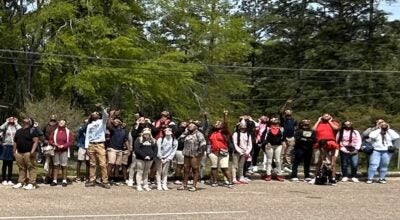Author to speak about Tuskegee Airmen at Luverne Public Library
Published 9:44 am Thursday, November 1, 2012
History was made in Tuskegee, Ala., in 1941.
In June of that year, in the small Macon County city, the first squadron of African-American pilots was formed. These men would come to be known as the Tuskegee Airmen.
Dr. Daniel Haulman, an Air Force historian and author who co-wrote The Tuskegee Airmen: An Illustrated History, 1939-1949, has met many of the surviving Tuskegee Airmen.
“I’ve had the opportunity to meet a lot of them, and the ones that belonged to the 99th Fighter Squadron are the most proud,” said Haulman, who spoke at LBWCC in Greenville earlier this month. “Some of the members of the 99th claim that they are the only true Tuskegee Airmen because they were the first.”
Haulman will be speaking about the Tuskegee Airmen and his book at the Luverne Public Library on Sunday, Nov. 4 at 2 p.m.
The event is sponsored by the Crenshaw County Historical Society and is free to the public.
In all, nearly 1,000 African-American pilots in 44 classes were trained at the Tuskegee Army Air Field, but perhaps none had a greater impact than Class 42-C-SE, which graduated just five pilots on March 7, 1942.
Among those five was then Capt. Benjamin O. Davis Jr., a West Point graduate who would go on to become the Air Force’s first African-American general.
Davis and the rest of the 99th Fighter Squadron, which included George Roberts, Charles BeBow Jr., Mac Ross and Lemuel Custis, would go on to serve in North Africa, Sicily and Italy during World War II.
“These were the only black pilots in the entire military,” Haulman said. “There were none in the Navy and none in the Marines.”
The 99th Fighter Squadron, which later joined the 332nd Fighter Group, became known as the “Red Tails” after the bright red tails of their aircraft.
In 2012, famed producer George Lucas and 20th Century Fox released fictionalized portrayal of the group’s exploits title “Red Tails.”
But the truth is, the Tuskegee Airmen didn’t need Hollywood to make their story any more compelling.





